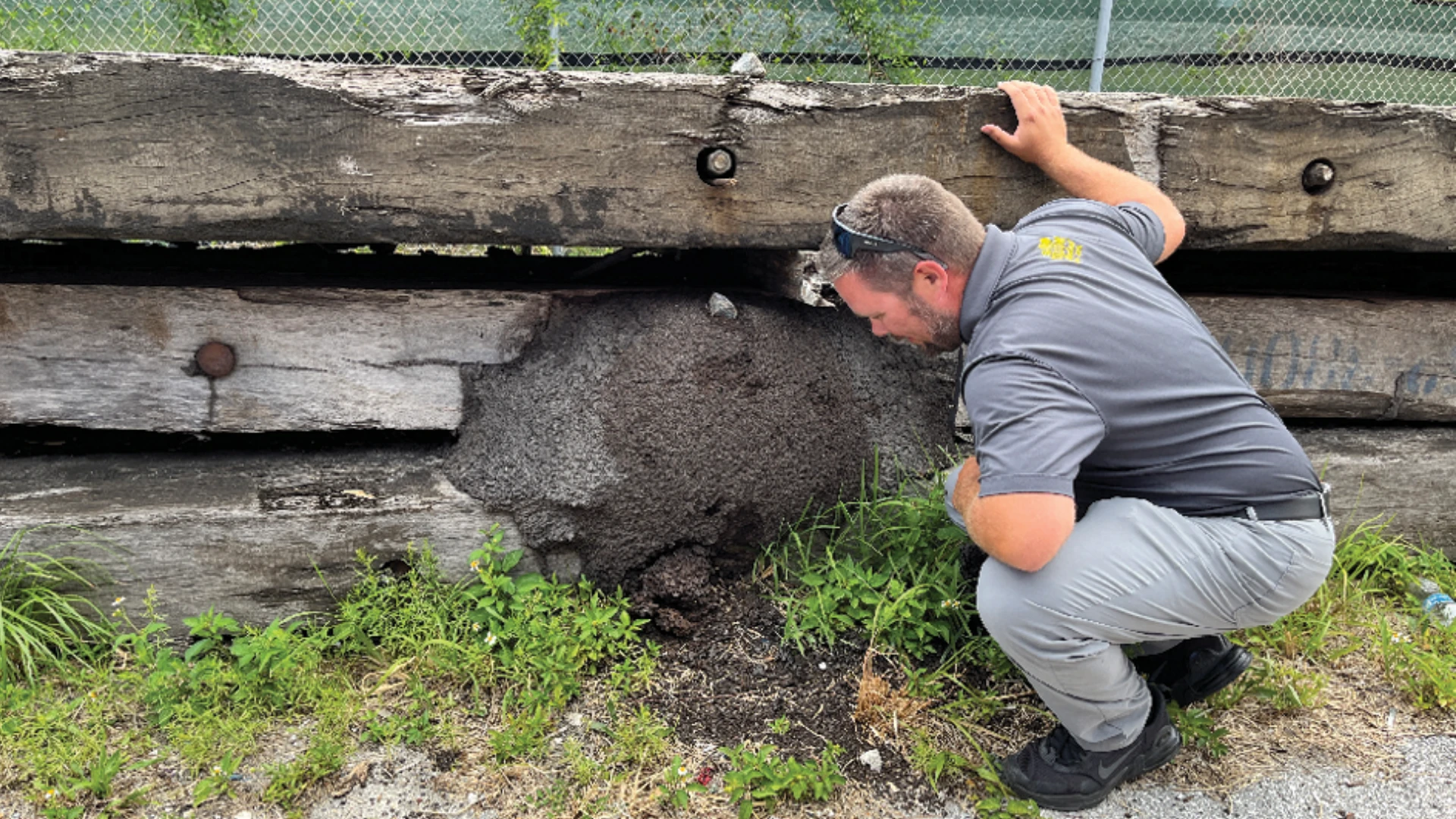When your customers' health is a factor, you can never know too much about harmful public health pests.
I’m in a little different line of work than most of the readers of this magazine. Instead of termite and pest control issues, I deal with human health issues — whether or not someone will get sick or die from exposure to an insect, spider, tick or mite. Although morbid and sometimes disgusting, the area of public health entomology is quite fascinating. It’s hard to believe that a tiny tick (about the size of your little fingernail) can kill a 200-pound adult! It’s the same for a tiny mosquito or flea. It certainly makes you respect (or maybe fear?) the little creatures. I have personally seen an adult human in a severe medical crisis due to two — only two — fire ant stings. He could have easily died without treatment. Fire ants are so small that they surely can’t inject much venom — maybe a hundredth of a drop — yet they can kill a person with venom allergy.
But not all arthropods are dangerous. Only a few species can be considered harmful to human health. Most are harmless and are extremely important in the food chain and "web of life." So, we don’t need to adopt a "the only good bug is a dead bug" attitude. Instead, we should learn which species are harmful and target control efforts only toward them. Below is an annotated list of arthropods I would consider the "most wanted" list, ranked roughly from most important to the least important. It only concerns arthropod pests (no rodents or birds) in the United States and should not be considered to be exhaustive or conclusive. Since the list is restricted to the United States, some of the most famous disease vectors are obviously absent — such as tsetse flies and kissing bugs (kissing bugs do occur in the southern United States, but apparently are not often responsible for cases of Chagas’ disease like they are in Mexico and Central America). In addition, lice and scabies mites are omitted because they constitute a medical problem and generally do not fall within the realm of the pest control industry. PCOs should take time to familiarize themselves with the following pests and current strategies for their control.
- Ticks
The deer tick, Ixodes scapularis, is notorious as a vector of Lyme disease, ehrlichiosis and babesiosis in the eastern United States. Making matters worse, this species has been found to be infected with more than one of these disease agents at the same time. Theoretically, you could be bitten by this tick and get all three diseases.
The American dog tick, Dermacentor variabilis, is the main vector of Rocky Mountain spotted fever (RMSF) in the central and eastern United States. These ticks are also known to carry the agent of tularemia and to cause tick paralysis in pets and humans.
The Rocky Mountain wood tick, Dermacentor andersoni, is known to transmit RMSF in the western states, as well as Colorado tick fever.
The brown dog tick, Rhipicephalus sanguineus, although probably not involved in disease transmission in the United States, is often found both indoors and outdoors at residences with pet dogs. I have seen literally thousands of these nuisance ticks inside homes, characteristically crawling up the walls.
- Mosquitoes
The house mosquito, Culex pipiens (including the southern United States form, C. quinquefasciatus), is a major vector of encephalitis viruses, such as St. Louis encephalitis and the new West Nile encephalitis, in the United States.
The encephalitis mosquito, Culex tarsalis, is an abundant and widespread species throughout the western United States that is known to be a vector of western equine encephalitis and St. Louis encephalitis.
The Asian tiger mosquito, Aedes albopictus, although not currently thought to be involved in disease transmission in the United States, is one of the most abundant and annoying urban mosquitoes. In infested areas, literally hundreds of these mosquitoes swarm you during daytime, biting relentlessly.
Salt marsh mosquitoes (several species), notorious for their nuisance effects and long migratory flights, pose a tremendous pest problem along United States coasts. Without organized mosquito control (and sometimes even with it!) outdoor activity along vast areas of sea coasts becomes unbearable.
- Fleas
The cat flea, Ctenocephalides felis, although only rarely involved in disease transmission in the United States, is notorious as a nuisance and fierce biter, causing many thousands of cases of skin rashes and infections (resulting from scratching). It is probably the most common flea encountered by PCOs.
The Oriental rat flea, Xenopsylla cheopis, is the famous flea vector of bubonic plague (plague still occurs in the western United States) and also transmits murine typhus organisms in parts of south Texas and Southern California. It is primarily associated with rats.
- Spiders
The brown recluse spider, Loxosceles reclusa, and related species, are notorious for causing necrotic skin lesions. Spots of rotting out human tissue are caused by the spider’s venom. Depending upon several factors, these spots can range from the size of a dime to the size of a pie plate.
The black widow, Latrodectus mactans (pictured on pg. 100) and other related "widow" spiders — are known to cause severe systemic illness in humans due to the neurological effects of their venom. People only rarely die from widow spider bites, but may experience severe pain, nausea, vomiting, chills, sweats and muscle cramps.
- Yellowjackets
Of the stinging insects, yellowjackets (several species in at least three genera) are perhaps the most notorious offenders, causing multiple painful stings and sometimes allergic reactions. Yellow-jackets generally nest underground and will fly out aggressively pursuing anyone or anything disturbing their nest.
- Cockroaches
The German cockroach, Blattella germanica, is probably the most important overall pest in human habitats worldwide. This cockroach has an extremely short period from hatching until sexual maturity, leading to a high reproductive potential. Although German cockroaches don’t bite or sting (occasionally cockroaches feebly bite or nibble, but generally to no ill effect), they are responsible for contaminating food and food processing areas. They also are increasingly being implicated as a cause of allergy and asthma .
The American cockroach, Periplaneta americana, is a large, common species in the warmer regions of the United States. It is common in urban alleys and sewer/drain systems. This species is a frequent culprit in contaminating food and food-processing areas.
The smoky brown cockroach, Periplaneta fuliginosa, surpasses the American cockroach as a peridomestic pest in much of the southern United States. These cockroaches live outside, feeding on vegetation and other organic matter, but enter homes and food establishments freely.
- Fire Ants
The imported fire ant, Solenopsis invicta, is famous for boiling out of earthen mounds and stinging aggressively. In addition to a painful sting, some people are highly allergic to fire ant venom. Fire ants have increasingly been reported to enter buildings, stinging the inhabitants. They now inhabit more than 300 million acres in at least 13 states.
- Flies
Biting midges (many species), also known as no-see-ums, punkies or biting gnats, are generally not involved in disease transmission, but are vicious and persistent biters. These tiny, almost invisible gnats often make outdoor activity on the coast impossible.
The housefly, Musca domestica, and related filth fly species, are famous for both nuisance effects and contamination of food and food-processing areas. Flies may carry disease germs on their mouthparts, body hairs or sticky pads of their feet.
Black flies (many species) occur in enormous swarms mostly in the northern U.S. Their bites may bleed profusely and even sometimes cause an overall reaction consisting of itching, burning, fever and inflamed lymph nodes.
Horse and deer flies (many species) can be extremely annoying to people in the outdoors during summer months. Their scissors-like mouthparts inflict painful bites.
The stable fly, Stomoxys calcitrans, is a fierce people-biter year round, but especially on the Gulf Coast in the fall. This fly looks similar to the house fly, though it is more robust and has piercing, rather than sponging, mouthparts.
The author is a medical entomologist for the Mississippi Department of Health and clinical assistant professor of preventive medicine at the University of Mississippi Medical Center, Jackson, Miss. He can be reached at jgoddard@pctonline.com or 601/576-7512.

Explore the May 2000 Issue
Check out more from this issue and find your next story to read.
Latest from Pest Control Technology
- The Evolving World of Electronic Rodent Monitoring
- Back-to-basics Approach for Cockroach Control
- PPMA Encourages PMPs to Take Part in Termite Awareness Week
- Moneypenny is a Provider of Virtual Receptionists
- Video: Top 10 PCT Photo Contest Finalists
- Massey Services Expands with Southeast Commercial Region
- Pest Management Foundation Announces Kevin J. Burns Scholarship
- How to Identify Clover Mites





